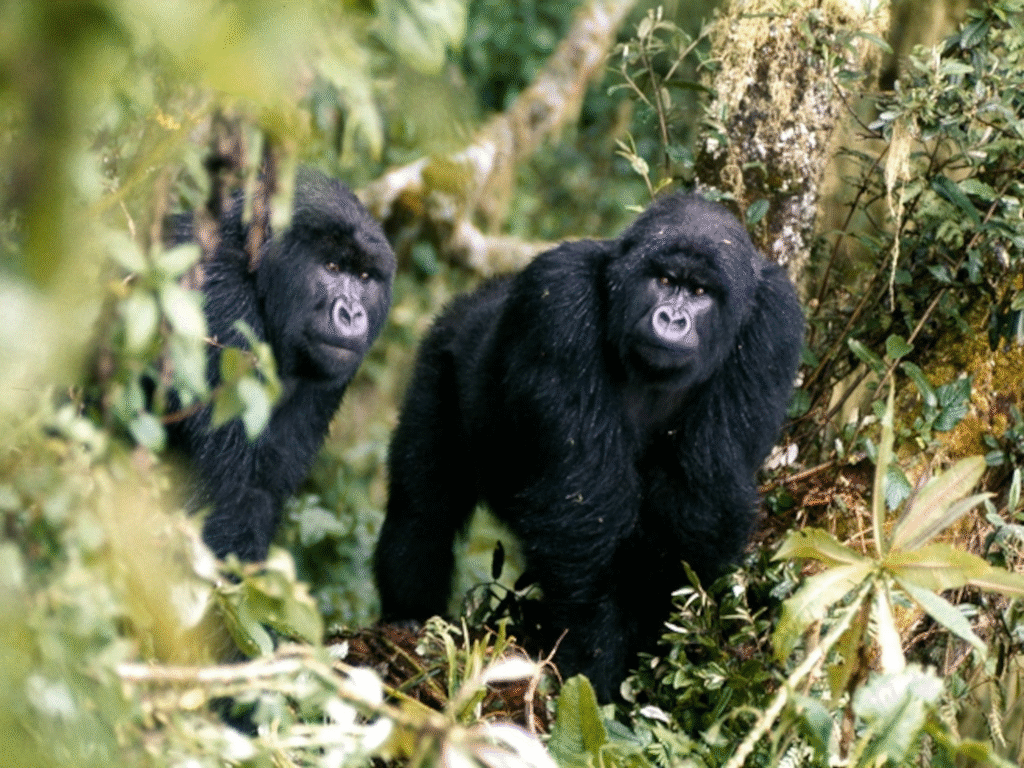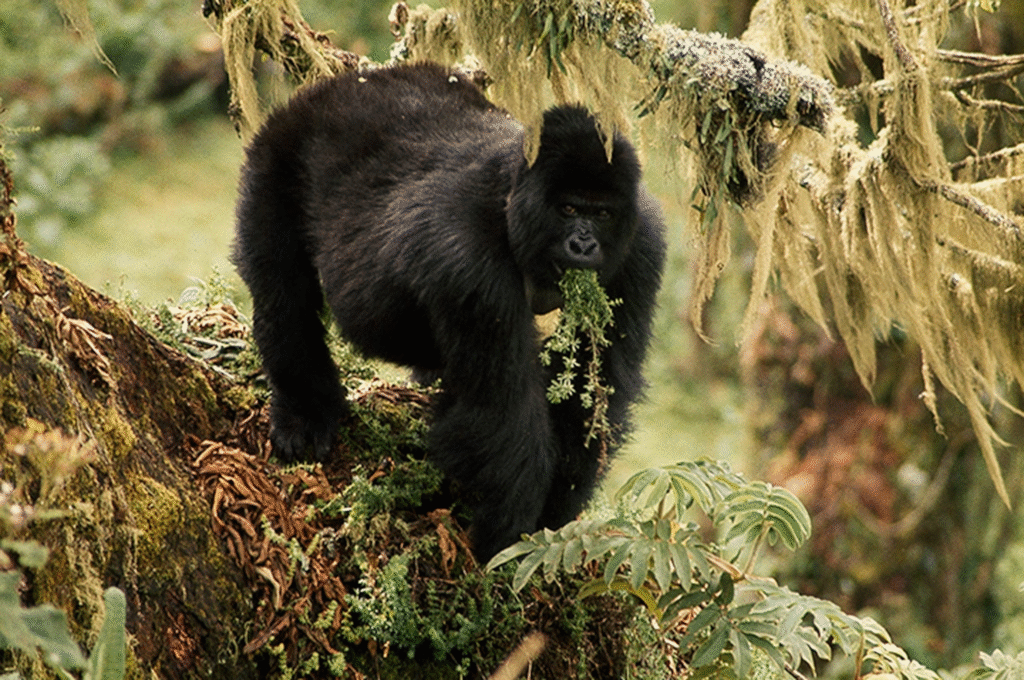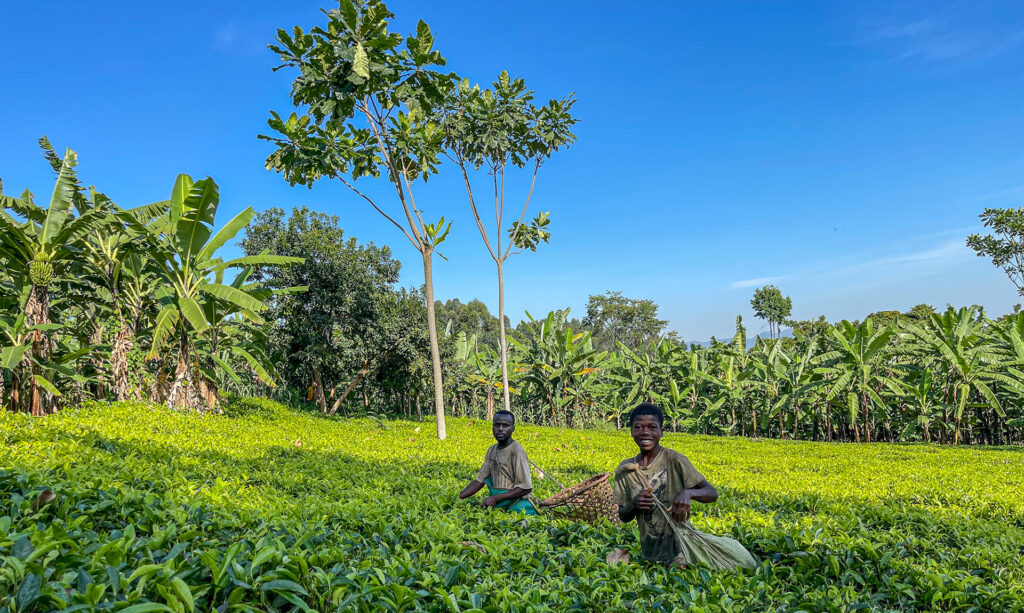Where the soul of the forest whispers in the mist
Gorillas are among Africa’s most remarkable and cherished wildlife, inhabiting the dense rainforests and rugged mountains of Central and East Africa. These great apes live in tight-knit family groups led by a dominant silverback, showcasing complex social behaviors and remarkable intelligence. From the misty slopes of the Virunga Mountains to the lush lowland forests of the Congo Basin, gorillas play a vital ecological role by dispersing seeds and maintaining forest health. Their powerful presence and gentle nature captivate all who encounter them, offering a rare glimpse into a world where strength meets sensitivity.
Despite their majesty, gorillas face intense threats from habitat destruction, poaching, and diseases like Ebola, pushing many populations toward endangerment. Conservation efforts in countries such as Rwanda, Uganda, and the Democratic Republic of Congo have made strides in protecting these giants through anti-poaching patrols, habitat preservation, and responsible tourism. Gorilla trekking and habituation experiences have not only brought global awareness but also vital funding for continued protection. The survival of Africa’s gorillas depends on sustained commitment, blending science, community involvement, and respect for one of the continent’s most treasured species.
So lace up your boots, grab your camera, and prepare to meet the wild — this is where your gorilla trekking dreams and unforgettable safari adventures truly begin.
Truly Iconic Highlights in Uganda
Trek through Bwindi’s mystical rainforest and meet the endangered mountain gorillas in their breathtaking natural home.
Encounter mountain gorillas and golden monkeys on Mgahinga’s misty volcanic trails, where culture and alpine wildlife thrive together.
Unwind after your trek with a peaceful canoe ride across Lake Bunyonyi, Uganda’s most tranquil and scenic highland lake.
Enhance your gorilla trekking safari with an optional chimpanzee encounter in Uganda’s lush forests, adding depth and diversity to your primate adventure
Gorillas in Africa: A Deep Dive into the Giants of the Forest
Gorillas are among the most iconic and fascinating animals on the African continent, representing a unique blend of strength, intelligence, and social complexity. These majestic great apes inhabit the dense forests of Central and East Africa, where they play crucial roles in maintaining the delicate balance of their ecosystems. Yet, despite their imposing size and power, gorillas are gentle, highly social creatures whose survival hangs by a thread due to habitat loss, poaching, and disease. Understanding the lives, habitats, and challenges faced by Africa’s gorillas is essential—not just for conservationists, but for anyone drawn to the wild heart of Africa.
The Two Main Species of African Gorillas
Africa is home to two primary species of gorillas, each with distinct subspecies and habitats. They are classified broadly as the Western Gorilla and the Eastern Gorilla.
The Western Gorilla (Gorilla gorilla) is divided into the Western Lowland Gorilla and the Cross River Gorilla. Western Lowland Gorillas inhabit the dense rainforests of countries like the Republic of Congo, Gabon, Cameroon, and the Central African Republic. They tend to be slightly smaller, with brownish-grey fur and more pronounced noses. The Cross River Gorilla, much rarer and more elusive, lives in a small forested area on the Nigeria-Cameroon border and is critically endangered.
The Eastern Gorilla (Gorilla beringei) includes two subspecies: the Mountain Gorilla and the Eastern Lowland Gorilla (also called Grauer’s Gorilla). Mountain Gorillas are famously found in the Virunga Mountains along the borders of Rwanda, Uganda, and the Democratic Republic of Congo, as well as in Bwindi Impenetrable Forest in Uganda. These gorillas have thicker fur adapted to colder mountainous climates. The Eastern Lowland Gorilla inhabits the lowland tropical forests of eastern DRC and is larger and heavier than its mountain cousin but less studied due to ongoing conflict in its range.
Habitat and Behavior
Gorillas are forest dwellers, thriving in diverse habitats from lowland swamps and dense rainforests to misty mountain slopes. Their diet is primarily herbivorous, composed of leaves, shoots, stems, fruits, and occasionally insects. Their feeding behavior is complex and varies by habitat and season, requiring vast tracts of forest to support their nutritional needs.
Socially, gorillas live in tight-knit groups called troops, usually led by a dominant silverback male who protects and guides the group. Troops can range from a handful of individuals to over 20 members. Communication among gorillas is rich and varied, including vocalizations, chest-beating, facial expressions, and body postures, all vital for maintaining group cohesion and social order.
Conservation Status and Threats
Despite their iconic status, all gorilla species face severe threats. The International Union for Conservation of Nature (IUCN) classifies most gorilla subspecies as endangered or critically endangered. Habitat destruction due to logging, mining, and agriculture remains the largest threat. Poaching, although illegal, continues due to bushmeat hunting and sometimes for the illegal pet trade. Additionally, diseases such as Ebola and respiratory infections have devastated populations in certain areas.
Political instability and armed conflict, particularly in parts of the Democratic Republic of Congo, further complicate conservation efforts, making some gorilla habitats dangerous for researchers and rangers.
Gorilla Tourism: A Double-Edged Sword
Responsible gorilla tourism has emerged as a powerful conservation tool, particularly in Rwanda, Uganda, and parts of Congo. By allowing controlled, limited visits to habituated gorilla families, tourism generates critical funds that support park management, local communities, and anti-poaching efforts. It also raises global awareness of the gorillas’ plight.
However, tourism must be carefully managed to avoid disturbing the gorillas, spreading human diseases, or encouraging habituation that might increase vulnerability to poachers. Strict rules govern visitor numbers, health screenings, and behavior in the presence of gorillas to protect both animals and humans.
The Future of Gorillas in Africa
The future of Africa’s gorillas depends heavily on sustained conservation efforts, political stability, community involvement, and global awareness. International collaborations between governments, NGOs, and local communities have seen some encouraging successes, such as the steady increase of mountain gorilla populations in recent decades.
Continued investment in habitat protection, anti-poaching patrols, veterinary interventions, and eco-tourism development is essential. Equally important is empowering local communities to benefit from conservation, fostering a sense of guardianship and pride.
Key Species in Bwindi & Mgahinga: Information to Know.
Bwindi and Mgahinga National Parks are rich in biodiversity, best known for their endangered mountain gorillas and unique Albertine Rift species. Bwindi is also home to chimpanzees, forest elephants, and over 350 bird species, including rare endemics like the African green broadbill. In Mgahinga, golden monkeys, buffalo, and highland birds thrive among the bamboo forests and volcanic slopes.
In the Realm of Giants – Bwindi & Mgahinga in Frames.
Wander through an elegant gallery capturing Uganda’s most exclusive gorilla sanctuaries, where ancient forests cradle the last mountain gorillas in a world of mist, mystery, and majesty.
Essential Planning Tips for Visiting Uganda’s National Parks.
Get ready for the wild heart of Africa with expert travel tips on when to visit, what to pack, where to go, and how to make the most of your safari across Uganda’s breathtaking national parks.
Why Uganda for Gorilla Trekking?
Uganda is not just a destination — it's the very soul of gorilla trekking. With over half of the world’s remaining mountain gorillas calling its misty forests home, Uganda offers the rarest encounters in their most authentic setting. Here, your journey is not rushed or crowded. Instead, you’re guided by experienced rangers through pristine jungles where gorillas live as they always have — wild, free, and magnificent
From insider travel insights to unforgettable trekking guides, our blog is your trusted path into Uganda’s wild heart — connecting you with mountain gorillas, breathtaking landscapes, and the soul-stirring adventures that make this land unlike any other.





